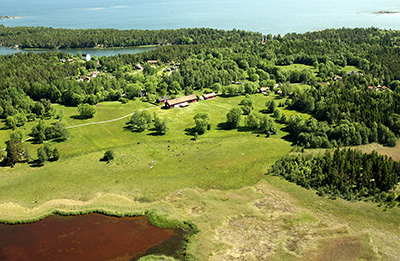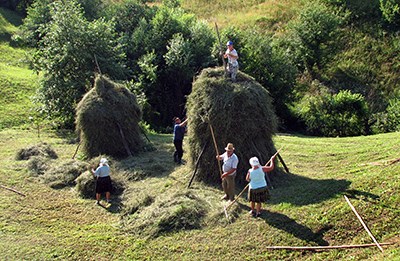Most reports of today's biggest challenges - environmental degradation, loss of biodiversity, climate change - raise many issues. The book Issues and Concepts in Historical Ecology (Carole L Crumley, Tommy Lennartsson, Anna Westin, ed.) presents key clues on how to reverse the negative trends and create a sustainable future. Historical ecology implies a meeting between scientific and scholarly disciplines, which in cooperation can create the necessary understanding in solving the acute issues we face.
- The past is useful to the future as regards innovative resource management, biological and cultural heritage, and the importance of valuing the natural world that sustains us, says Carole Crumley.
A key issue for a sustainable future is the threat to biodiversity, which today is depleted in catastrophic dimensions due to human activity. Looking back becomes an essential part of the work.
- When working on preserving threatened biodiversity, one must always think about history and how it was before diversity was under such threat as we see today, says Anna Westin.
- In the cultural landscape, it is always about understanding how the human us of nature created certain conditions for species that have disappeared today. For example, if you want to conserve vegetation types in natural pastures, it is not enough to know that the fields were grazed, we also have to find the crucial details that shaped the biodiversity now lost. We need to combine good historical and ecological knowledge and use it for future care, says Tommy Lennartsson.
Knowledge gained in this way can be translated into tangible managing regimes such as reintroducing or imitating historical details in the present landscape management. This can be done through for instance delaying grazing start in some pastures, and by that recreate living space for species threatened of extinction.
With roots in anthropology, ecology, palaeoecology, geography and natural and cultural heritage, historical ecology provides tools that can help build a resilient and sustainable future for humanity. There is no wonder cure, and historical ecology presupposes hard long term work. Above all, it means a willingness to reach understanding with stakeholders, and the ability to combine different fields of knowledge.
Issues and Concepts in Historical Ecology is the result of a process that started in 2013, with a multidisciplinary workshop in historical ecology. The book contains ten chapters written by 22 researchers from universities in Sweden and abroad. Each chapter is in itself a transdisciplinary exploration that included new approaches to various issues, and discussions with the entire research group. In recurring meetings, all authors have contributed to the whole of the book.
Thus, the book is what it teaches - through its detailed description of this type of research, it is a roadmap for interdisciplinary research projects. The target group is researchers and students at higher levels, but also people who work with landscape management and policy makers.

Carole L Crumley is Professor Emerita of Anthropology at the University of North Carolina-Chapel Hill, Visiting Professor at the Swedish University of Agricultural Sciences. A founder of historical ecology, she studies long-term landscape change in Burgundy, France and is active in the global change and complex systems research communities.
Tommy Lennartsson is Biologist and an Associate Professor in Conservation Biology at the Swedish University of Agricultural Sciences, Uppsala, and Researcher at the Swedish Biodiversity Centre.
Anna Westin is Biologist and an Associate Professor in Agricultural History at the Swedish University of Agricultural Sciences, and Researcher at the Swedish Biodiversity Centre.
In the picture: Aerial photo from the province of Uppland, Sweden, showing a mosaic of nature types formed by various combinations of human impact and natural processes. In the front, grazing has shaped a fodder-producing grassland out of a seashore reed belt, in which the biomass-producing vegetation is influenced by both the grazing and the water.
Photo: Bergslagsbild, Courtesy of the Uppsala County Administrative Board and the Uppland Foundation.

